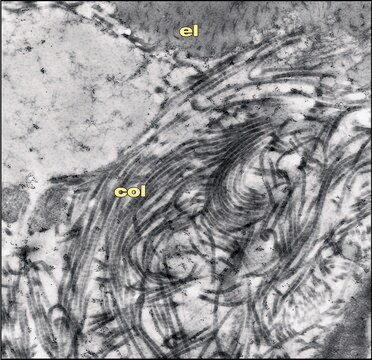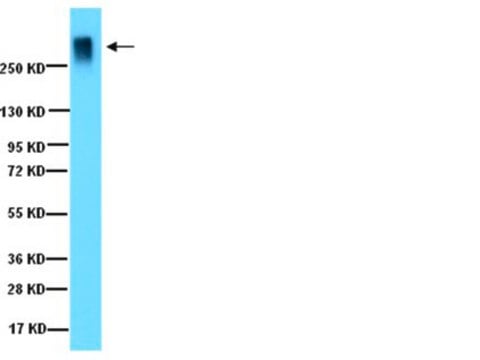AB5932
Anti-Potassium Channel KvLQT1 Antibody, CT
Chemicon®, from rabbit
Sinónimos:
IKs producing slow voltage-gated potassium channel subunit alpha KvLQT1, KQT-like 1, Voltage-gated potassium channel subunit Kv7.1, kidney and cardiac voltage dependent K+ channel, potassium voltage-gated channel, KQT-like subfamily, member 1, slow delay
About This Item
Productos recomendados
origen biológico
rabbit
Nivel de calidad
forma del anticuerpo
affinity isolated antibody
tipo de anticuerpo
primary antibodies
clon
polyclonal
purificado por
affinity chromatography
reactividad de especies
human
reactividad de especies (predicha por homología)
mouse (based on 100% sequence homology), rat (based on 100% sequence homology)
fabricante / nombre comercial
Chemicon®
técnicas
immunohistochemistry: suitable
western blot: suitable
Nº de acceso NCBI
Nº de acceso UniProt
Condiciones de envío
wet ice
modificación del objetivo postraduccional
unmodified
Información sobre el gen
human ... KCNQ1(3784)
Descripción general
Especificidad
Inmunógeno
Aplicación
/Western Blotting Analysis: 2 μg/mL of this
antibody detected KvLQT1 in 10 μg of human
heart tissue lysate.
Optimal working dilutions must be determined by end user.
Neuroscience
Ion Channels & Transporters
Calidad
Western Blot Analysis: 2 µg/ml of this antibody detected KvLQT1 in 10 µg of human heart tissue lysate.
Descripción de destino
Forma física
Almacenamiento y estabilidad
Nota de análisis
Human heart tissue lysate
Otras notas
Información legal
Cláusula de descargo de responsabilidad
¿No encuentra el producto adecuado?
Pruebe nuestro Herramienta de selección de productos.
Código de clase de almacenamiento
12 - Non Combustible Liquids
Clase de riesgo para el agua (WGK)
WGK 1
Punto de inflamabilidad (°F)
Not applicable
Punto de inflamabilidad (°C)
Not applicable
Certificados de análisis (COA)
Busque Certificados de análisis (COA) introduciendo el número de lote del producto. Los números de lote se encuentran en la etiqueta del producto después de las palabras «Lot» o «Batch»
¿Ya tiene este producto?
Encuentre la documentación para los productos que ha comprado recientemente en la Biblioteca de documentos.
Nuestro equipo de científicos tiene experiencia en todas las áreas de investigación: Ciencias de la vida, Ciencia de los materiales, Síntesis química, Cromatografía, Analítica y muchas otras.
Póngase en contacto con el Servicio técnico





